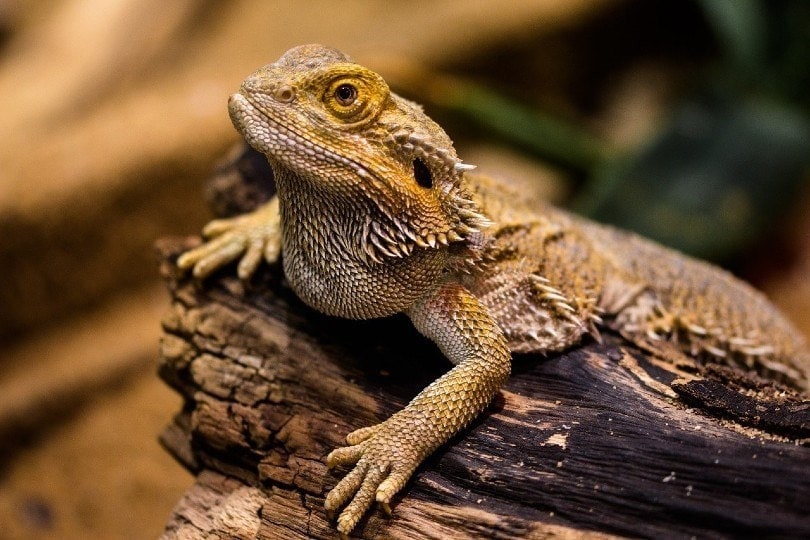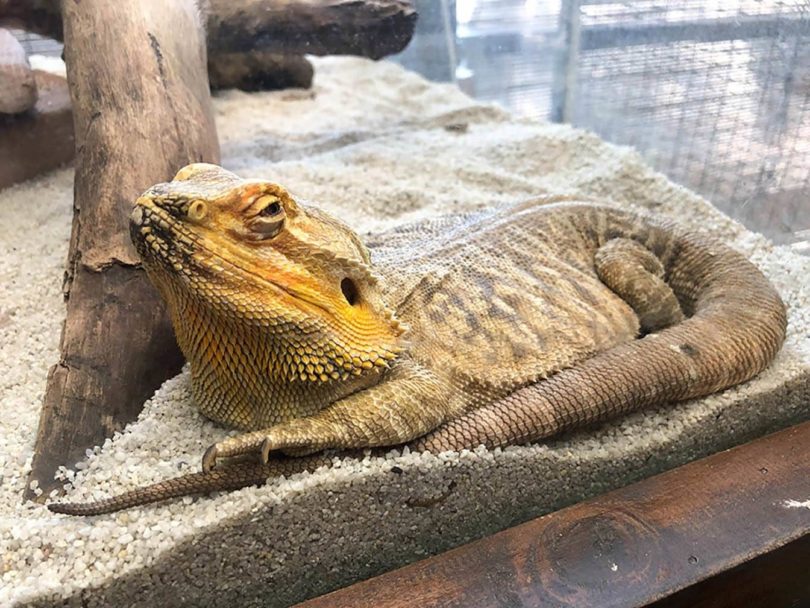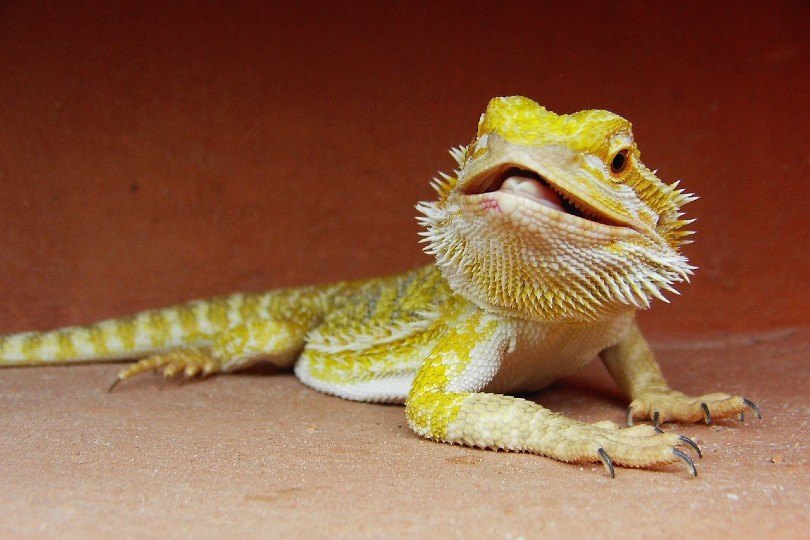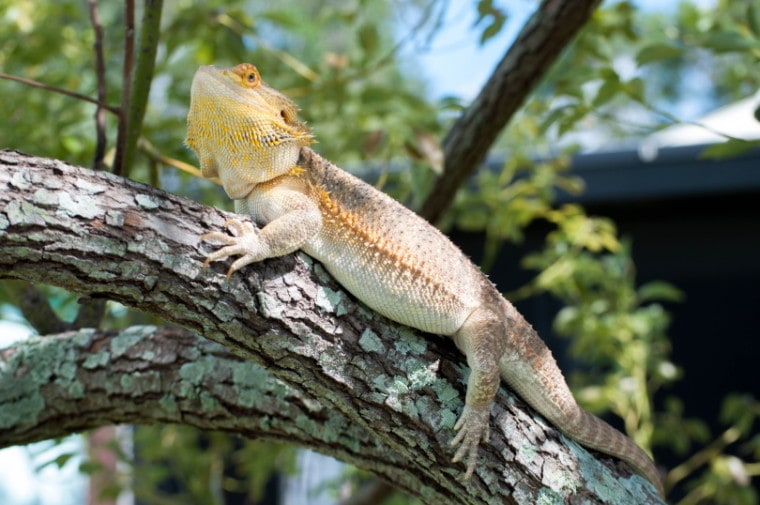
If you’re a big beardie fan, you might have seen the citrus bearded dragon, otherwise known as the tangerine or yellow bearded dragon. This gorgeous, boldly colored lizard is a real eye-catcher (though some can be neutral tones).
These lizards are friendly, interactive, and perfect for beginners and novice owners alike. If you appreciate this species and want to know more, we’re going to cover all the basics. Who knows—maybe the citrus beardie is your next pet?

Quick Facts about Citrus Bearded Dragon
| Species Name: | Pogona |
| Common Name: | Citrus Bearded Dragon |
| Care Level: | Beginner |
| Lifespan: | 10 to 15 years |
| Adult Size: | 16 to 24 inches |
| Diet: | Omnivore |
| Minimum Tank Size: | 40 gallons |
| Temperature: | 75-100 degrees Fahrenheit |
| Humidity: | 20%-40% |
Do Citrus Bearded Dragons Make Good Pets?
In natural habitats, bearded dragons live in grasslands and savannahs throughout Australia. Today, they are one of the most popular lizards for hobbyists the world over.
Bearded dragons are some of the friendliest lizards you can pick to have as pets. They make excellent first-time reptiles for a child, permitting that they are responsible enough to perform general care.
Because they don’t have strict environmental requirements, upkeep should be relatively easy. These are the kind of lizards you can carry around on your shirt or let out to play on the floor.
As long as you can keep up with primary care and interact with your beardie, these lizards are perfect for just about anyone.

Appearance
Citrus bearded dragons range from bright yellow to light tan. They have flat bodies with nodules and spikes along their sides, neck, and legs. Males have more pronounced femoral pores on their hindquarters—which is a distinct sex indicator.
Males typically grow larger than females with more pronounced heads, growing nearly 24 inches mature. Females only grow to be 16 to 19 inches once they reach adulthood.

How to Take Care of Citrus-Bearded Dragons
Since bearded dragons are tropical creatures, they require specific living conditions to stay healthy. For example, beardies don’t produce calcium independently, so they derive these nutrients from UVB light and calcium supplementation.
Here’s how to set up their terrarium for the best life experience.
Habitat, Tank Conditions & Setup
Tank
Citrus bearded dragons can grow up to 24 inches in total, so their enclosure has to accommodate their size. Adult bearded dragon requires at least a 40-gallon, all-glass tank.
Beardies don’t climb as much as some other reptiles, but they do love hanging on to larger branches with firm bark. But the width of the enclosure should be more than the height.
Enclosure Decor
Even though bearded dragons are curious creatures that are highly alert, they love being lazy, too. So they spend most of their day basking in their favorite spot, flatly soaking up the rays.
But when they’re not having a tanning session, you can find them hiding in a hollow log or hide. They love piling into a dark place with a snug fit for a good nap.
You can also have beardie-safe plants and other décor just to spice things up.
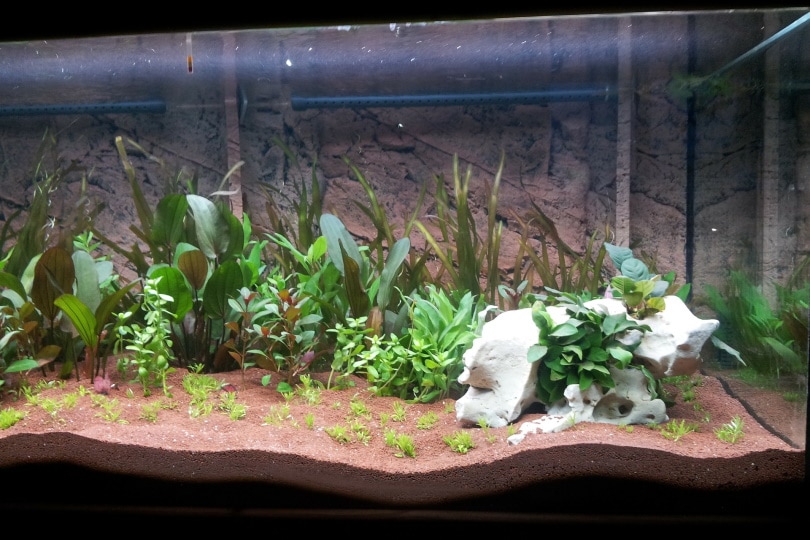
Lighting
Bearded dragons need UVB light to absorb calcium and vitamin D. These lights should stay on for 12 hours per day. These lizards require no lighting at night—but you should always make sure temperatures stay above 65 degrees F.
Heating (Temperature & Humidity)
Beardies use different heat sources to regulate their body heat. They require a basking spot, which should stay between 88 and 100 degrees F. The cooler side of the tank should remain between 75 and 85 degrees F.
Humidity levels should stay between 20% to 40%. They don’t require as much moisture as some other reptiles, but proper humidity aids in shedding and overall skin health.
You can buy a thermometer and hydrometer to keep in the cage for monitoring.
Substrate
The substrate you pick is very important, as it lines your lizard’s environment.
Even though sand is advertised constantly as a good substrate for beardies, this is not true. These smaller particles can digest with food, causing major intestinal blockages-which can lead to death.
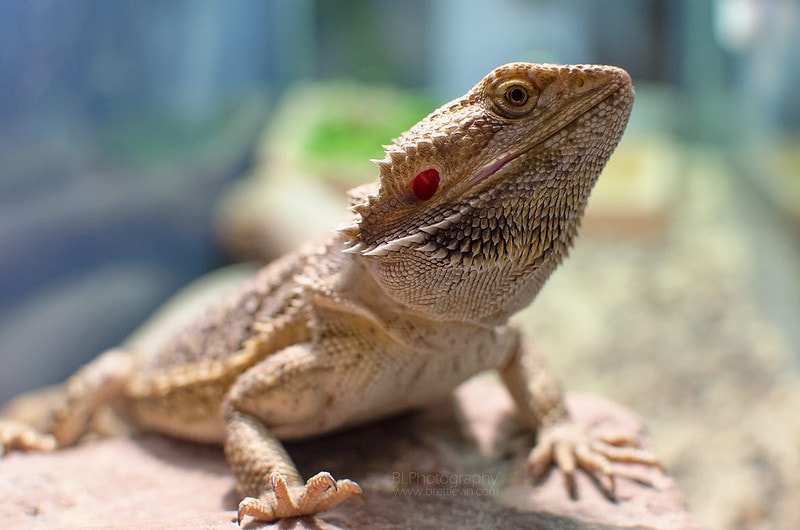
Tank Recommendation
| Tank Type: | 40-gallon glass enclosure |
| Lighting: | Basking lamp |
| Heating: | Heating pad/ lamp |
| Best Substrate: | Reptile carpet, newspaper, bare bottom |

Feeding Your Citrus Bearded Dragon
Your beardie is an omnivore, meaning they eat plant and animal matter to survive. Most of their diet consists of gut-filled insects, but they love their greens, too!
During their growing months, juveniles will eat mostly insects—as many as they can handle—every day.
After they reach adulthood, you can slow feedings from every 2-3 days. This is because fully-grown bearded dragons need more vegetables than anything else. As a result, they receive moisture, vitamins, and minerals in their diet.
Never feed your beardie wild insects, even if you’re trying to save money. These insects might contaminate your lizard—so it isn’t worth the risk. Glowing insects, like fireflies, are incredibly toxic.

Diet Summary
| Fruits | 5% of diet |
| Insects | 25% of diet–large insects |
| Vegetables | 70% of diet |
| Supplements Required | Calcium |

Keeping Your Citrus Bearded Dragon Healthy
If you keep up with proper diet and environmental care, your citrus bearded dragon should live a long and lustrous life. However, certain health issues might pop up depending on several factors—genetic, environmental, and dietary.
Just like any other pet, bearded dragons should see an exotic vet once a year to make sure they are maintaining proper weight, free of parasites, and showing no signs of illness.
Common Health Issues
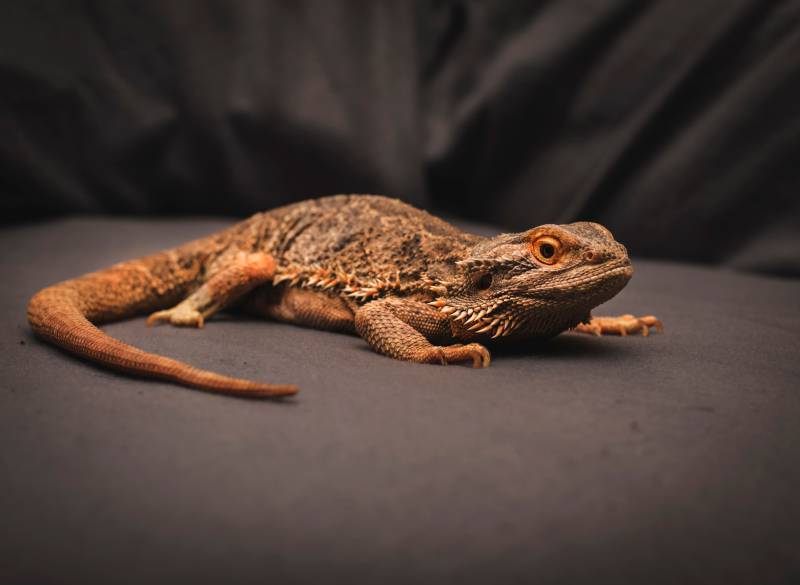
Lifespan
Citrus bearded dragons have a favorable lifespan, ranging from 10 to 15 years. They usually run into a few health issues that shorten their lifespan, but they must have the right environment to stay healthy.
Breeding
If you already have past breeding experience, breeding might work for you. However, it does require particular conditions for breeding to be successful. Therefore, make sure to do in-depth research beforehand so you can get fully prepared.
Females should be at least 18 months old before you should consider them good breeding candidates. After the female lays her clutch, babies emerge within 55 to 75 days.

Are Citrus Bearded Dragons Friendly? Our Handling Advice
Citrus bearded dragons are just like all their beardie cousins—curious, docile, and easy to handle. But like any creature, you should always handle it with care to the best of your ability.
You can get your bearded dragon out in a safe space to let them explore. They are very inquisitive—and they love to perch on your limbs because they can’t get enough of your body heat.
These interactive lizards have the hearts of reptile lovers everywhere. However, they can carry some harmful bacteria on their skin—so always wash your hands after handling them.
Shedding & Brumation: What to Expect
Unlike snakes who shed their skin all at once, bearded dragons shed in sections. You might notice that the skin around their face or along their back begins to flake. They might seem a little more sluggish or moody than usual.
Beardies shed much more as juveniles since they are growing so drastically. You can expect your youngling to shed once every few weeks. Once they reach adulthood, they shed approximately three times per year.
They usually enter brumation around 10 months of age—but not before. Since they are domesticated, they might not follow a brumation pattern. However, you will notice sluggishness, low appetite, and long sleep periods during this time.

How Much Do Citrus Bearded Dragons Cost?
Citrus bearded dragons vary considerably in price based on age, coloration, and quality. Juvenile bearded dragons are usually at the lower end of the spectrum while fully mature beardies can be a pretty penny.
Breeder
If you buy a citrus beardie from a reputable breeder, you can expect costs to sway between $150 and $1,000.
The total cost depends on factors like breeder rates, quality, and age of the beardie.
Shelter/Rescue
You might also be able to locate a citrus bearded dragon at a shelter or rescue. If you choose to adopt, you can pay anywhere from $40 to $100.
Free
Sometimes, you might get lucky and find a current owner who doesn’t want their pet any longer. You can get a beardie and sometimes a whole setup for next to nothing—if not free.
Care Guide Summary

Final Thoughts
If you enjoy the look of this lizard and think care sounds like a cinch, time to shop around. You can find the exact age and coloration you’re looking for—plus, you can get the exact citrus shade you want.
These lizards make remarkable pets in most situations. All you have to do is provide the right living space and diet—and you have a healthy beardie.
See Also:
- 7 Common Bearded Dragon Health Problems (Vet Answer)
- Do Bearded Dragons Have Teeth? Interesting Facts & Care Tips
Featured Image Credit: MrMikeMcD, Shutterstock

